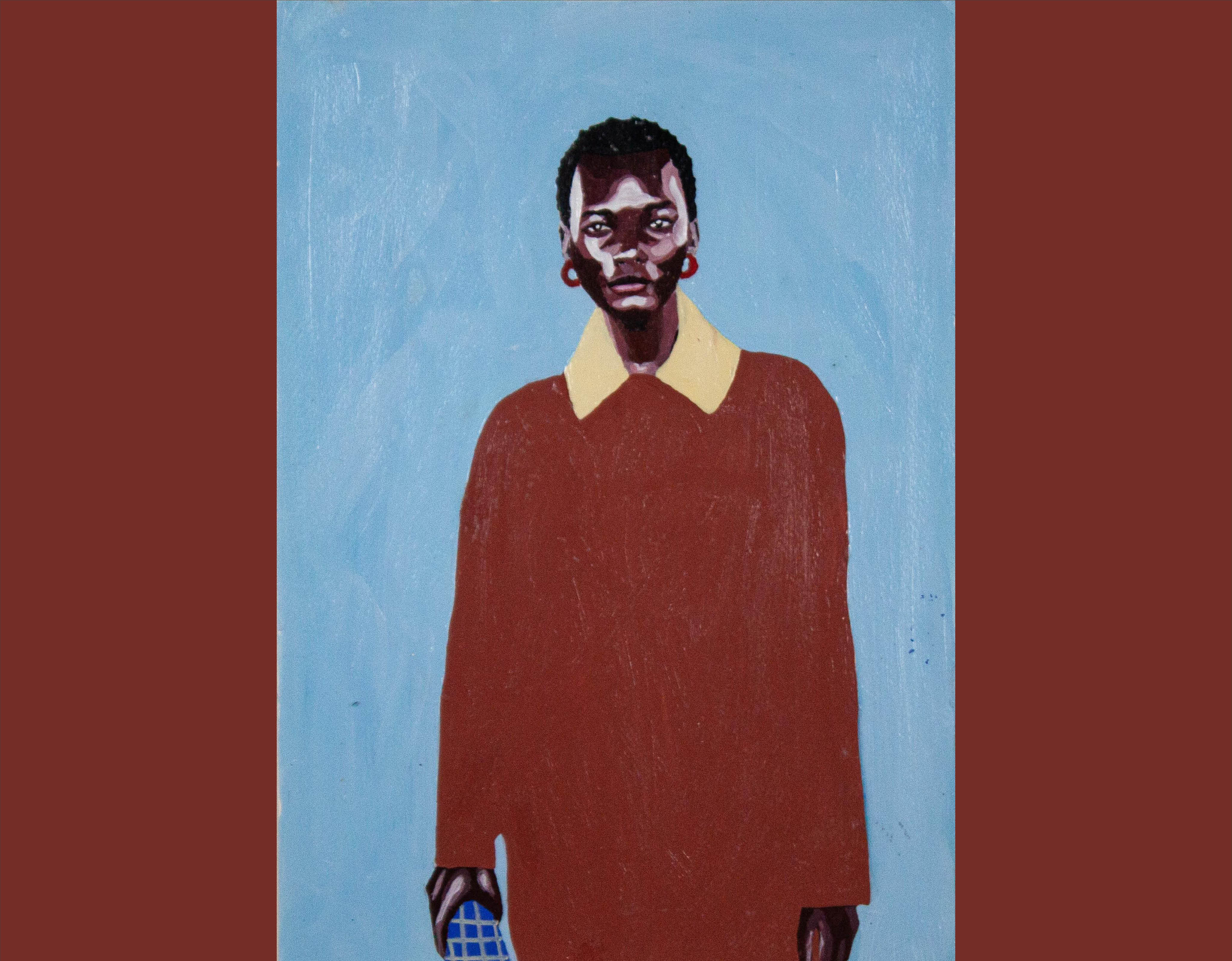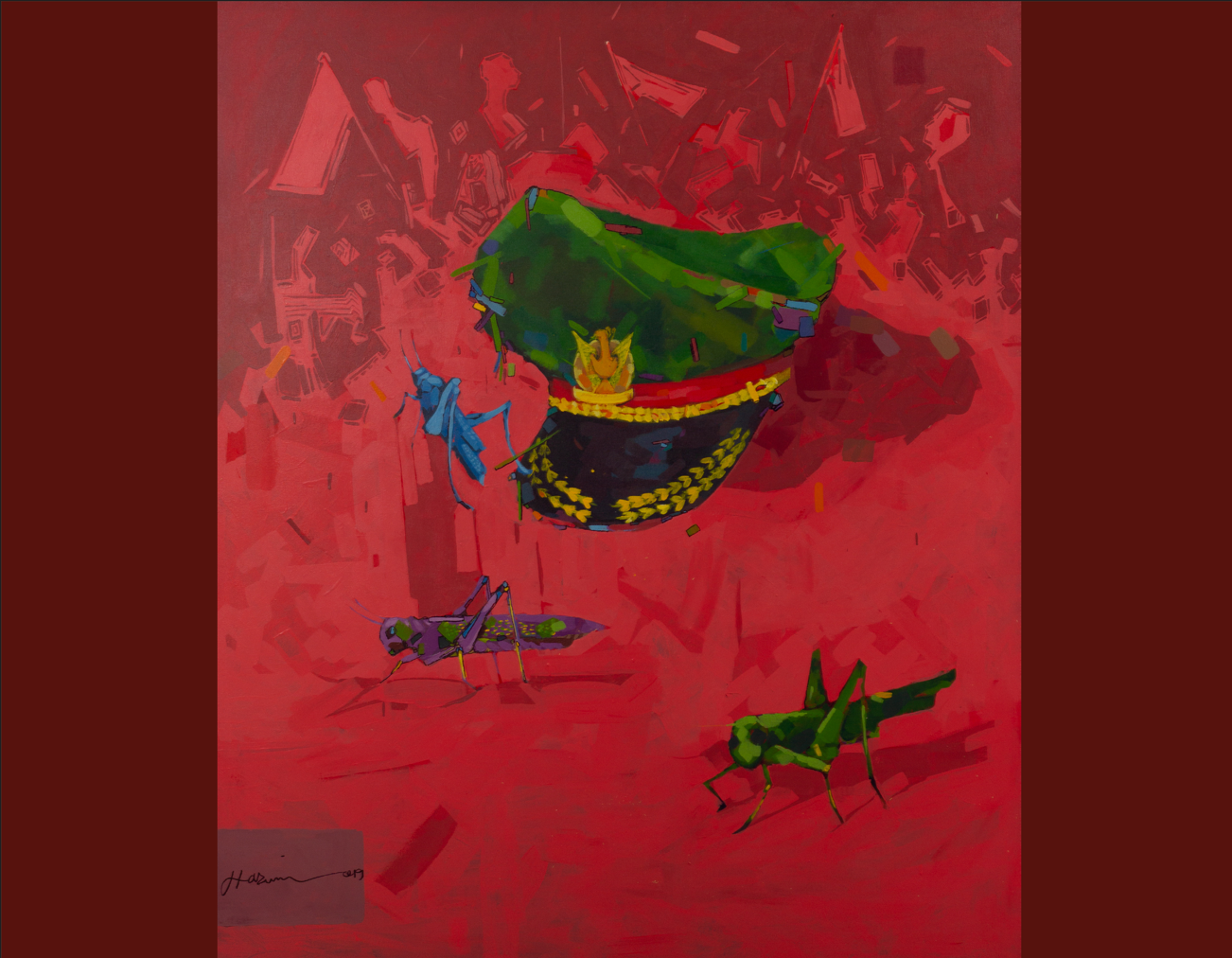The price of bread

The price of bread
By Anna Sheinman
“In the room the women come and go talking of Michelangelo” – T.S Eliot.
The property hosting the RMB Latitudes Art Fair was previously named the secret garden and rightly so. Like the Frances Hodgson Burnett novel it seems this place could hold a great multitude of experiences.

The Latitudes Art Fair has curated this garden gallery in accordance to its architecture, an array of styles mirror the selection of art. Moorish facades lead to neo-classical columns, four sets of toes each, housing a green phallus ‘Tapticles 2’ courtesy of Norman Catherine. Modern stained glass walls protect whimsical porcelain plates, all ready for the tea party to begin, with the table set by Kevin Collins. The excitement for further eccentricities ensues.
I try to look for something raw in every piece, but often struggle to find even a wishbone of anatomy in the art. But wishbones, as well as wish fulfillment, are not in short supply from the bony figures beneath the bushes. Hidden creatures of bronze pop out at me and the small interaction makes me feel human.

A piece of rock too smooth becomes a sphere and these ‘painted dogs’ are so of nature, from the raw natural materials used, to the feeling it takes to create them with each touch of Gail Catlin, the sculptor. They are a manifestation of life drawn from the earth. They possess souls, making the Japanese garden where I first found them a sanctuary.
It is a sanctuary distracting me from voices and bringing me out of my own thoughts into a conversation between two women discussing the price of bread. Adamantly, the first woman fights for her cause and I decide to take a stroll with them unbeknown to the other party. Comparing the various styles, colours and tastes of bread, they weave in and out of hedges of art.
She holds a designer handbag coordinated expertly with her mask and sunglasses that remain looking down throughout the interaction. If only she would direct her discerning gaze to an art piece, perhaps the soft watercolours in front of her titled ‘Township scene’ by Durant Sihlali.
I’m reminded that this is as much a social event as anything else, and that an art ‘show’ is just that. Equipped with glass viewing decks overlooking the sprawl, the attendees are undeniably the spectacle here. Art and bodies work in codependency to create the labyrinth of an event.
Nooks of ivy and new old stone. A beautiful house cannot mask an absence of life within it. Some snapping crocodile artists love bird buyers to eat their tears, creating something truly commercial.
This makes it all the more exciting to hunt through lawns of Datura, skiving past watering hole bars in search of something that resonates. The treasure hunt leads me up grand sandstone steps to a room full of figures much like me, immersed in the constructed nature of this place.
The relationship between person and location is explored through Heidi Fourie’s matching brushwork tying the figure into its background seamlessly. Her characters share a palette with the nature around them, furthering the illusion or perhaps fact that with bare hands reaching into a green stream, we are entirely of nature.

The solitude we feel in front of something greater than ourselves is unbearably hard to ignore while standing in front of her art. Her figures hidden amongst trees remind me of the little bronze warriors outside which glow with the sun on their skin in a bronze halo created by Nandipha Mntambo, cementing my feel of a fundamentally linked and designed space.
In an ideal world art may not be sold at all, for worry of others thoughts contaminating it or changing the process and output for an external gaze. So to see an artist put something so soft on a canvas as a moment in nature or build a bold bronze warrior showing immense amounts of courage and resolve is applaudable.
I venture on, moving down from the Persian garden and am abruptly hit by a cellphone flat on the forehead, which pulls me out of my thoughts to a more practical one; is the art being seen or only its shadow self projected onto a screen? Is that in itself art? The crowds of bodies around the bars allow some space to move between artworks.
While dodging a phone to my left and right I manage to catch glimpses of passing pieces before I feel compelled to limbo below another misshapen metal claw.
An empty rocking swing seat inhabited by a ghost girl makes me yearn for this place without the crowds but even in the empty air I still see the traces of what has been, the impressions made and presence lingers as such a strong energy of art, reactions, social influence and more do not fade fast and linger while not dwelling for long at all.
I find the relief I’m searching for in Adele van Heerden’s Blue gouache and still waters, the loneliness of the pool without people like a body without organs, translating to me as what I longed for in that moment.
Endless sculptures both part of the exhibit and not, create playful visual interest as I meander through fountains of cherubs in stone and pebble holding fish mouths apart, pet lions with ivy shrouds. Art is hiding in plain sight.
Nicola Bailey's ‘Familiar Shadow’ atop rose quartz lends to the jovial energy in the main feed area fitting in immaculately amongst the people and scene, if the metal dog were to lift its paw I would not be surprised.
I’ve often liked the idea of displaying art in a lounge area or any space you can picture yourself owning and enjoying it, carpeted and warm. This garden is the equivalent with its flawless incorporation of the art into its surroundings in the form of stone and metal eyes watching you wherever you go.
“And I have known the eyes already, known them all— The eyes that fix you in a formulated phrase, And when I am formulated, sprawling on a pin, When I am pinned and wriggling on the wall, Then how should I begin To spit out all the butt-ends of my days and ways? And how should I presume?” (T.S Eliot, The Love Song of J. Alfred Prufrock).
When an event is so predetermined and the relationship between artists and buyers is so comfortable, how can we even go about trying to spit out the butt end of our days and begin to change it for the better? For though the cause and result are so perfected, what other unseen effects does this kind of event bring into question?
The artists not here, not seen, the money spent, the organs of the art world, buyers, artists and agents. What kind of entanglement has been created? Is there such a thing as true pure art as a form of expression and if that is the case, should it not be seen as more sacred?
I could not ignore the insincerity of the event brought on by its insecurity, and presenting in its faux met gala result. The argument that something true or “good” is found amongst the negative, or even blooms from it, may have merit but this event is by no means bad, it is unbearably pleasant.
In a room or garden of chattering faces and full places, it is impossible for me to separate one aspect of this experience from another. It is all intrinsically linked to create a living breathing creature of an instance. A grand thought experiment.
This article was produced as part of the ARAK x Latitudes Critical Art Writing Workshop led by Ashraf Jamal over the course of the 2024 RMB Latitudes Art Fair.
.svg)


.svg)
.svg)
.png)

